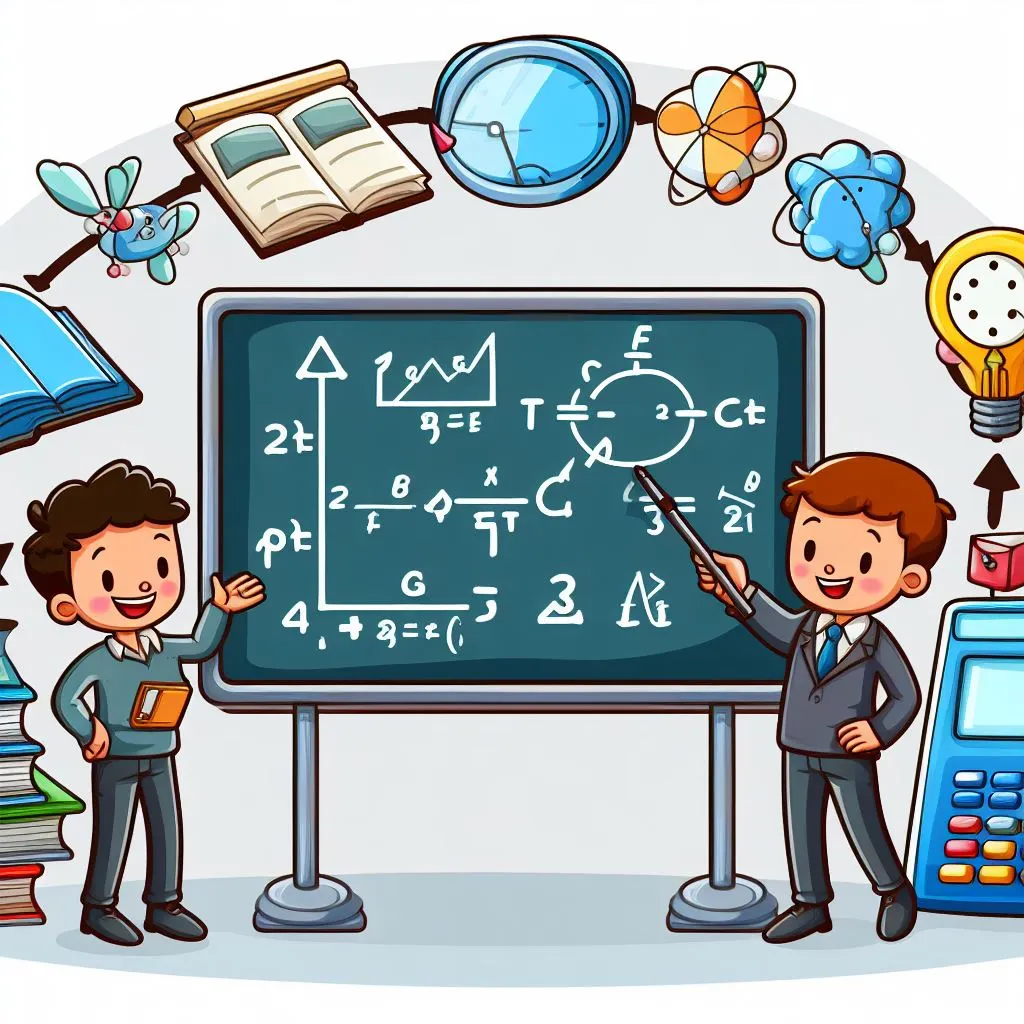Harnessing the Pigeonhole Principle: A Comprehensive Exploration and Practical Insights for Problem Solving

Mathematics often provides elegant solutions to real-life problems, and one such problem involves finding common ground between mathematics and social interactions. In this blog post, we will delve into a theoretical discussion aimed at helping university students tackle assignments that revolve around the Pigeonhole Principle. Our focus will be on proving that in a group of 100 people, there are at least two people with the same number of friends within the group. This seemingly paradoxical statement can be logically explained using the Pigeonhole Principle, a fundamental concept in combinatorics. If you need assistance with your cryptography assignment, feel free to reach out for help as well.
Understanding the Pigeonhole Principle
Before we dive into the proof, let's first grasp the essence of the Pigeonhole Principle. This principle is a powerful tool in combinatorial mathematics that deals with distributing objects into categories or "pigeonholes." The principle can be summarized as follows:

Pigeonhole Principle: If you want to distribute n objects into m pigeonholes, and n is greater than m, then at least one pigeonhole must contain more than one object.
In our case, the "objects" represent people, and the "pigeonholes" represent the number of friends each person has. We aim to show that in a group of 100 people, at least two of them must have the same number of friends. To do this, we need to set up our pigeonholes and distribute our "pigeons" (people) accordingly.
Setting Up the Pigeonholes
In this scenario, the number of friends each person has serves as the basis for our pigeonholes. To find out how many different numbers of friends can exist in a group of 100 people, we need to analyze the possibilities.
Let's assume the minimum number of friends one can have is 0 (no friends), and the maximum is 99 (everyone else in the group). The total number of distinct possibilities, or pigeonholes, for the number of friends a person can have ranges from 0 to 99. There are, therefore, 100 different pigeonholes (0 to 99) available to distribute our 100 people into.
Applying the Pigeonhole Principle
Now that we have 100 people and 100 pigeonholes, let's distribute our people into these pigeonholes based on the number of friends they have. We can do this by ensuring that each person goes into the pigeonhole corresponding to their number of friends.
Here's where the magic happens: Since we have more people (100) than we have pigeonholes (also 100), according to the Pigeonhole Principle, there must be at least one pigeonhole containing more than one person. In other words, there must be at least two people in the group with the same number of friends.
Proof Complete
And there you have it! We've successfully proven that in a group of 100 people, there are at least two people with the same number of friends within the group. This proof is rooted in the fundamental principle of combinatorics known as the Pigeonhole Principle.
The Historical Roots of the Pigeonhole Principle
Before we explore further applications, it's worth acknowledging the historical roots of the Pigeonhole Principle. While it may seem like a straightforward concept, its formalization and recognition within mathematics have a rich history.
The principle's origins can be traced back to various ancient civilizations. For example, early Chinese mathematicians were known to use it in problems related to the division of resources among people and animals. In Europe, the principle appeared in various guises, such as the "Box Principle" or the "Dirichlet Drawer Principle."
The term "Pigeonhole Principle" itself became popularized in the 1960s, but the concept had been used implicitly in mathematics for centuries. Its name derives from the idea that if you have more pigeons than pigeonholes in which to place them, at least one pigeonhole must contain more than one pigeon.
Understanding its historical context helps us appreciate that this principle is not just a modern mathematical construct; it has been a tool of mathematical reasoning used by civilizations throughout history to address real-world problems.
Further Applications of the Pigeonhole Principle
Now that we've established the basic concept, let's explore more applications in mathematics and beyond.
1. Birthday Paradox:
One of the most famous applications of the Pigeonhole Principle is the "Birthday Paradox." It's a counterintuitive result that demonstrates that in a group of just 23 people, at least two people share the same birthday. This may seem surprising at first, but it's a consequence of the principle.
To solve this problem, we treat each person's birthday as a pigeonhole, with 365 possible birthdays (ignoring leap years). When we have 23 people, we're trying to fit 23 "pigeons" into 365 pigeonholes. The Pigeonhole Principle guarantees that at least one pigeonhole must contain more than one person, meaning that at least two people share the same birthday.
2. Sock Colors:
Imagine you have 11 socks in your drawer, and they come in only three different colors: red, blue, and green. The Pigeonhole Principle can help prove that you must have at least two socks of the same color.
We can treat each sock color as a pigeonhole. When you pick a sock, you're essentially placing it into one of these three pigeonholes. Since you have 11 socks (more pigeons than pigeonholes), at least one pigeonhole must contain more than one sock of the same color.
3. Phone Numbers:
Consider a scenario where you want to assign unique phone numbers to individuals in a large city. Each phone number has ten digits (0-9). If there are more people than available phone numbers, you can use the Pigeonhole Principle to prove that at least two individuals will share the same phone number.
In this case, the ten possible digits correspond to ten pigeonholes. When you assign phone numbers to people, you're effectively placing them into these pigeonholes. If the city's population exceeds ten million (10^7), you have more people (pigeons) than phone numbers (pigeonholes), guaranteeing that at least one pigeonhole will have multiple people.
Practical Applications Beyond Mathematics
The Pigeonhole Principle's reach extends well beyond the realm of mathematics. It is a fundamental concept with applications in various fields:
1. Computer Science:
In computer science, the Pigeonhole Principle is instrumental in analyzing algorithms and data structures. It's often used to demonstrate the existence of collisions in hash functions or the need for efficient data structures to manage large datasets efficiently.
2. Cryptography:
In the field of cryptography, understanding the Pigeonhole Principle is crucial. It helps researchers and practitioners evaluate the security of encryption algorithms. For instance, it's used to demonstrate that perfect security, where each ciphertext is equally likely, is impossible when the number of possible messages exceeds the number of possible keys.
3. Error Detection:
In information theory and coding theory, the Pigeonhole Principle underlies concepts related to error detection and correction. It helps ensure that redundancy is added to data to detect errors that may occur during transmission.
Advanced Applications of the Pigeonhole Principle
The Pigeonhole Principle finds advanced applications in diverse fields. Ramsey Theory reveals structured patterns within chaos. In combinatorial games, it determines optimal strategies. In probability, it assesses likelihoods in random graphs. These advanced applications demonstrate its versatility in solving complex problems across mathematics, science, and beyond.
1. Ramsey Theory:
Ramsey theory is a branch of combinatorics that deals with large structures and seeks to find regularities among seemingly random elements. The Pigeonhole Principle is at the core of Ramsey theory. It is used to prove the existence of highly structured substructures within large, disordered sets.
For example, consider a party with six people. Among them, there are at least three who are either all mutual friends or all mutual strangers. This principle extends to larger gatherings as well. In a group of 18 people, there are at least four who are all either friends or strangers. This phenomenon, known as Ramsey's theorem, demonstrates how patterns and structure emerge even in seemingly chaotic settings.
2. Combinatorial Games:
In combinatorial games, where players take turns making moves to achieve a goal, the Pigeonhole Principle can be used to analyze game states. For instance, in a game like Tic-Tac-Toe, there are a finite number of possible game positions. By applying the principle, you can show that if both players play perfectly, the game will end in a draw.
3. Probability and Random Graphs:
The Pigeonhole Principle is essential in understanding the probabilistic aspects of combinatorics, particularly in the analysis of random structures like random graphs. It helps determine the likelihood of certain events occurring within these structures.
For instance, in the context of random graphs, the principle can be applied to determine the threshold at which a random graph is likely to contain a specific subgraph. This has applications in network theory, social networks, and the study of complex systems.
Variations of the Pigeonhole Principle
Variations of the Pigeonhole Principle expand its applicability. The Strong Pigeonhole Principle ensures one pigeonhole contains at least as many objects as there are pigeonholes, while the Infinite Pigeonhole Principle applies to infinite sets. The Generalized Pigeonhole Principle handles varying pigeonhole capacities, making it a versatile tool in both theory and practical scenarios.
1. Strong Pigeonhole Principle:
The Strong Pigeonhole Principle is a more powerful version of the basic principle. It asserts that not only will at least one pigeonhole contain more than one object, but there will also be a pigeonhole containing at least as many objects as there are pigeonholes.
For example, if you have 12 pigeons and 10 pigeonholes, the Strong Pigeonhole Principle guarantees that there is at least one pigeonhole containing at least 2 pigeons.
2. Infinite Pigeonhole Principle:
The Pigeonhole Principle can be applied to infinite sets as well. For instance, if you have countably infinitely many pigeons (objects) and finitely many pigeonholes, there will be at least one pigeonhole containing infinitely many pigeons. This principle is particularly useful in real analysis and sequences.
3. Generalized Pigeonhole Principle:
In some problems, the pigeonholes may have different capacities. In such cases, the Generalized Pigeonhole Principle asserts that if you have more objects than the sum of the pigeonhole capacities, at least one pigeonhole must be overfilled.
Reinforcing the Concept
To further solidify your understanding of the Pigeonhole Principle, let's revisit our original problem and apply the principle to a more generalized version of this problem:
"In a group of n people, where each person can have between 0 and n-1 friends, prove that there are at least two people with the same number of friends within the group."
The original problem is a specific case where n is set to 100. However, this generalized problem demonstrates that the Pigeonhole Principle applies regardless of the group's size. If n people can have between 0 and n-1 friends, we have n pigeonholes, each representing a distinct number of friends. With n people, we're distributing the pigeons (people) into these pigeonholes. Since n is greater than the number of pigeonholes, we can confidently assert that at least one pigeonhole must contain more than one person.
Conclusion
In this extended discussion, we've not only explored the Pigeonhole Principle in depth but also uncovered its historical roots and practical applications in various fields. From the counterintuitive Birthday Paradox to its relevance in computer science and cryptography, the Pigeonhole Principle is a versatile and essential concept in mathematics and beyond. As you work on your math assignments or encounter real-world problems that require logical analysis, remember that the Pigeonhole Principle can be a powerful tool in your problem-solving arsenal. Its simplicity and elegance make it a cornerstone of combinatorial mathematics, helping us find order and patterns in seemingly chaotic situations. So, embrace this principle, apply it creatively, and solve your math assignments and real-life challenges with confidence.